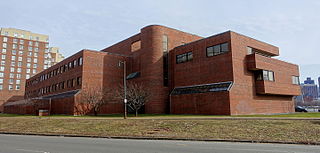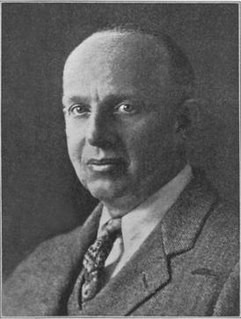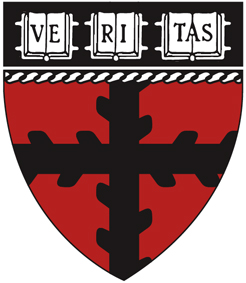Related Research Articles

Frederick Phillips "Fred" Brooks Jr. is an American computer architect, software engineer, and computer scientist, best known for managing the development of IBM's System/360 family of computers and the OS/360 software support package, then later writing candidly about the process in his seminal book The Mythical Man-Month. Brooks has received many awards, including the National Medal of Technology in 1985 and the Turing Award in 1999.

The Rowland Institute for Science was founded by Edwin H. Land, founder of Polaroid Corporation, as a nonprofit, privately endowed basic research organization in 1980. It is named for the first head of the American Physical Society, Henry Augustus Rowland. The Rowland is dedicated to experimental science across a wide range of disciplines. Research subjects at the institute includes chemistry, physics and biology, and focus on interdisciplinary work and the development of new experimental tools.

The Norwegian Institute of Technology was a science institute in Trondheim, Norway. It was established in 1910, and existed as an independent technical university for 58 years, after which it was merged into the University of Trondheim as an independent college.

Howard Hathaway Aiken was an American physicist and a pioneer in computing, being the original conceptual designer behind IBM's Harvard Mark I computer.

The Naval Undersea Warfare Center (NUWC) is the United States Navy's full-spectrum research, development, test and evaluation, engineering and fleet support center for submarines, autonomous underwater systems, and offensive and defensive weapons systems associated with undersea warfare. It is one of the corporate laboratories of the Naval Sea Systems Command. NUWC is headquartered in Newport, Rhode Island and has two major subordinate activities: Division Newport and Division Keyport in Keyport, Washington. NUWC also controls the Fox Island facility and Gould Island. It employs more than 4,400 civilian and military personnel, with budgets over $1 billion.
Engineering physics, or engineering science, refers to the study of the combined disciplines of physics, mathematics, biology, social science, and engineering, particularly computer, nuclear, electrical, electronic, aerospace, materials or mechanical engineering. By focusing on the scientific method as a rigorous basis, it seeks ways to apply, design, and develop new solutions in engineering.

Paul Horowitz is an American physicist and electrical engineer, known primarily for his work in electronics design, as well as for his role in the search for extraterrestrial intelligence.

Wirt Clinton Rowland was an American architect best known for his work in Detroit, Michigan.
Federico Capasso, a prominent applied physicist, was one of the inventors of the quantum cascade laser during his work at Bell Laboratories. He is currently on the faculty of Harvard University. He has co-authored over 450 papers, edited four volumes, and holds over 60 US patents.

The National Institute of Technology Hamirpur is a public technical university located in Hamirpur, Himachal Pradesh, India. It is one of the thirty one National Institutes of Technology established, administered and funded by MHRD. NIT Hamirpur offers a comprehensive curriculum for undergraduate, graduate and doctorate studies in various fields of Architecture, engineering, pure sciences and humanities.

The Buhl Building is a skyscraper and class-A office center in Downtown Detroit, Michigan. Architect Wirt C. Rowland designed the Buhl in a Neo-Gothic style with Romanesque accents. Constructed in 1925, it stands at 26 stories in the Detroit Financial District across Congress Street from the Penobscot Building and across Griswold Street from the Guardian Building, all of which were designed by Wirt C. Rowland. The Buhl Building stands on the corner of Congress St. West, and Griswold St. in Downtown Detroit. The building stands atop what used to be the Savoyard Creek near its confluence with the Detroit River. In 1836, the creek was covered and turned into a sewer. The Savoyard Club occupied the 27th floor of the Buhl Building from 1928 until its membership dwindled and the club closed in 1994. Suburban Mobility Authority for Regional Transportation has its headquarters in the building.
The Research Laboratory of Electronics (RLE) at the Massachusetts Institute of Technology (MIT) was founded in 1946 as the successor to the famed MIT Radiation Laboratory of World War II. During the war, large scale research at the RadLab was devoted to the rapid development of microwave radar. Projects included physical electronics, microwave physics, electromagnetic properties of matter, and microwave communication principles. The "Rad Lab" designed almost half of the radar deployed in World War II, created over 100 different radar systems, and constructed $1.5 billion worth of radar.

In digital electronics, an address decoder is a binary decoder that has two or more inputs for address bits and one or more outputs for device selection signals. When the address for a particular device appears on the address inputs, the decoder asserts the selection output for that device. A dedicated, single-output address decoder may be incorporated into each device on an address bus, or a single address decoder may serve multiple devices.

The Harvard John A. Paulson School of Engineering and Applied Sciences (SEAS) is the engineering school within Harvard University's Faculty of Arts and Sciences (FAS). It offers undergraduate and graduate degrees in engineering and applied sciences. Previously the Lawrence Scientific School and then the Division of Engineering and Applied Sciences, the School assumed its current structure in 2007. Francis J. Doyle III has been the School's dean since 2015.

Doğuş University, is a foundation university located Acıbadem, Kadıköy, İstanbul. It stands on the lower side of Acıbadem Hill.
John Robert Woodyard (1904–1981) was an American physicist who made important contributions to the technology of microwave electronics and invented "doping" to improve the performance of semiconductors.
Ronold Wyeth Percival King was an American applied physicist, known for his contributions to the theory and application of microwave antennas. He published twelve books and over three hundred articles in his area, as well as mentored one hundred doctoral dissertations.

Electronic engineering is an electrical engineering discipline which utilizes nonlinear and active electrical components to design electronic circuits, devices, VLSI devices and their systems. The discipline typically also designs passive electrical components, usually based on printed circuit boards. Electronics is a subfield within the wider electrical engineering academic subject but denotes a broad engineering field that covers subfields such as analog electronics, digital electronics, consumer electronics, embedded systems and power electronics. Electronics engineering deals with implementation of applications, principles and algorithms developed within many related fields, for example solid-state physics, radio engineering, telecommunications, control systems, signal processing, systems engineering, computer engineering, instrumentation engineering, electric power control, robotics, and many others.
Radhika Nagpal is an American computer scientist and researcher in the fields of self-organising computer systems, biologically-inspired robotics, and biological multi-agent systems. She is the Fred Kavli Professor of Computer Science at Harvard University and the Harvard School of Engineering and Applied Sciences. She is also a Core Faculty Member of the Harvard Wyss Institute for Biologically Inspired Engineering. In 2017, Nagpal co-founded a robotics company under the name of Root Robotics. This educational company works to create many different opportunities for those unable to code to learn how.
Francis "Frank" J. Doyle III is the dean of the Harvard John A. Paulson School of Engineering and Applied Sciences and the John A. and Elizabeth S. Armstrong Professor of Engineering and Applied Sciences. He is also affiliated with the Division of Sleep Medicine of Harvard Medical School.